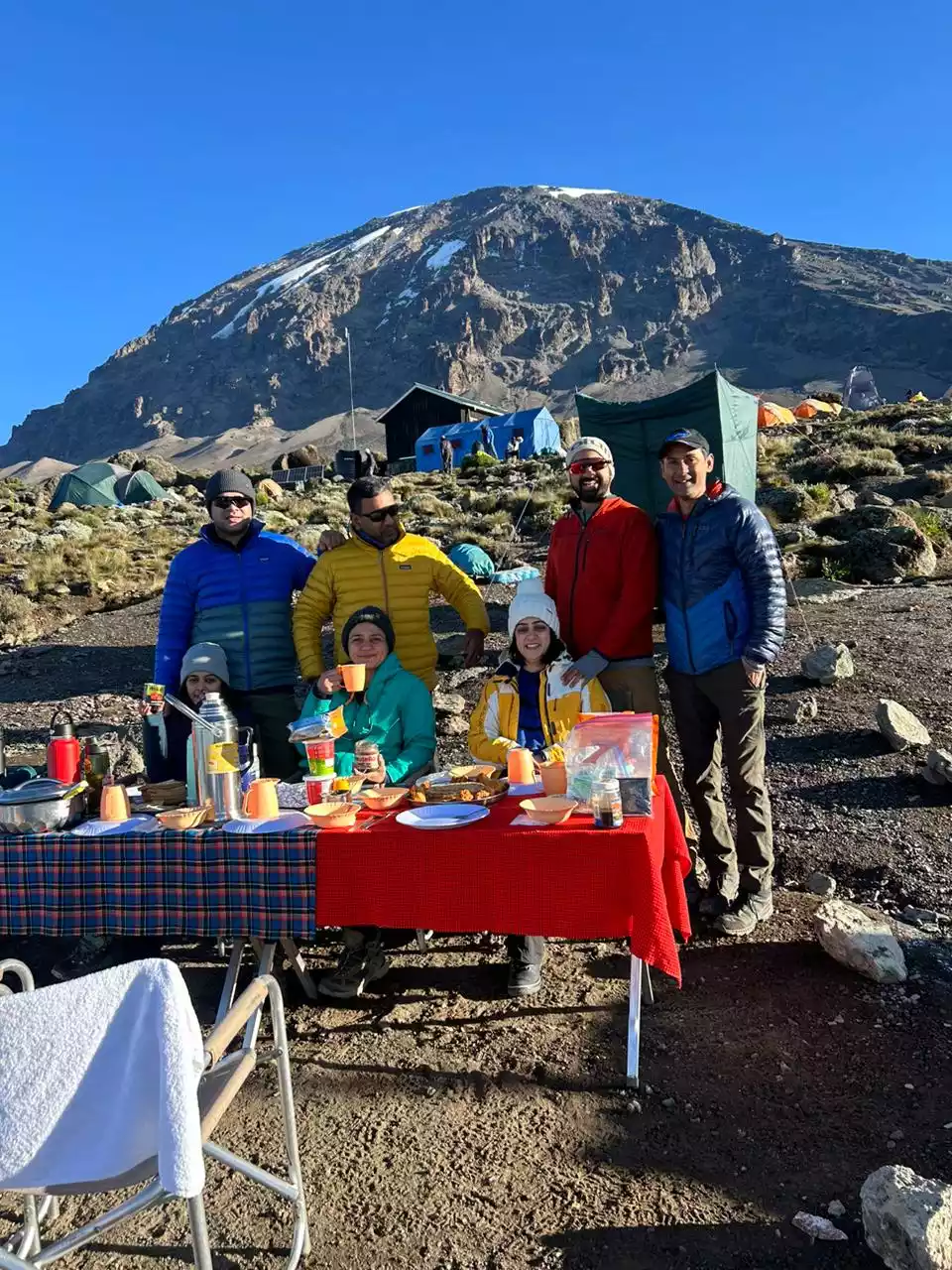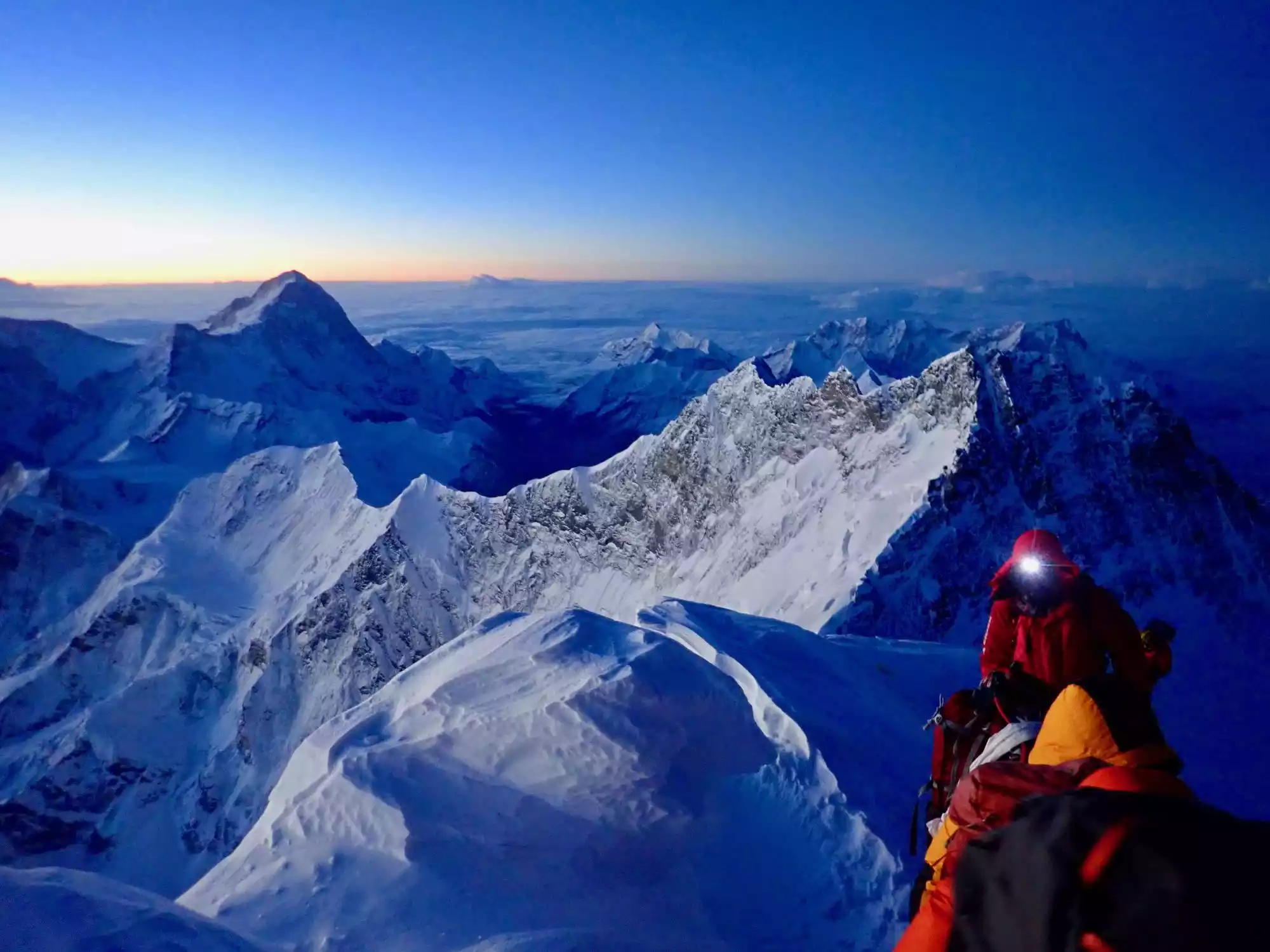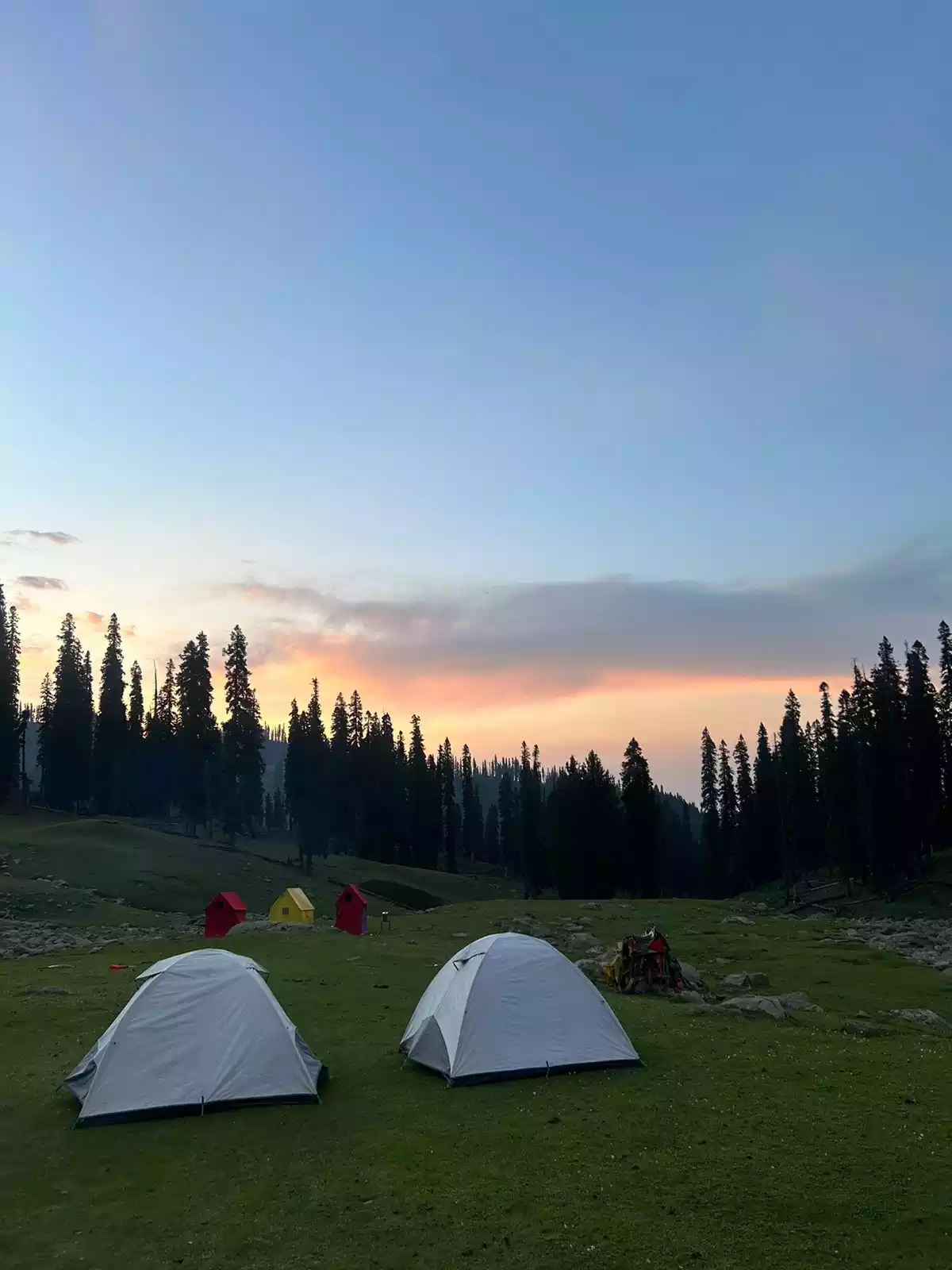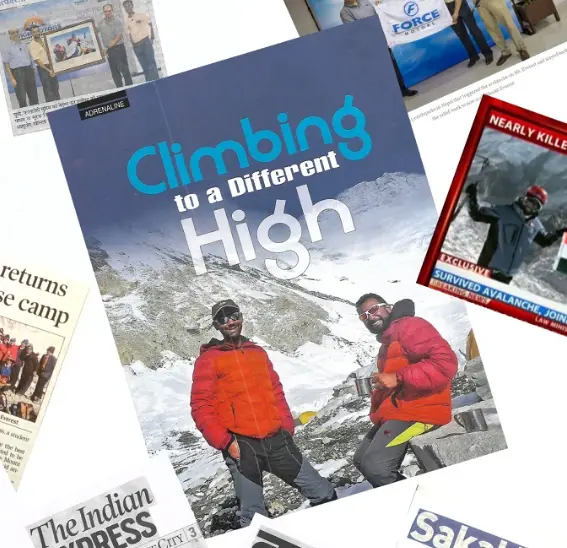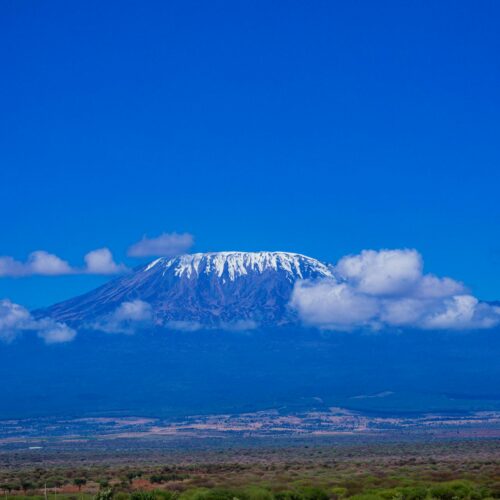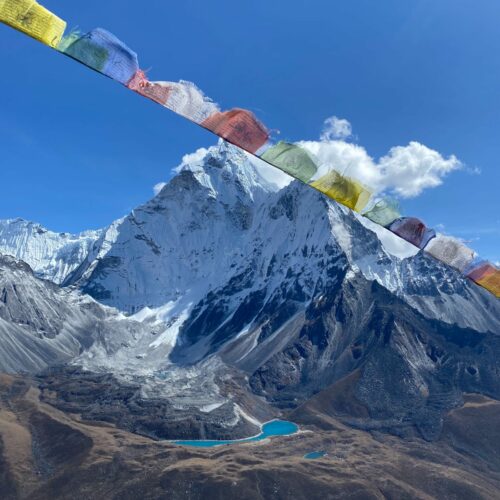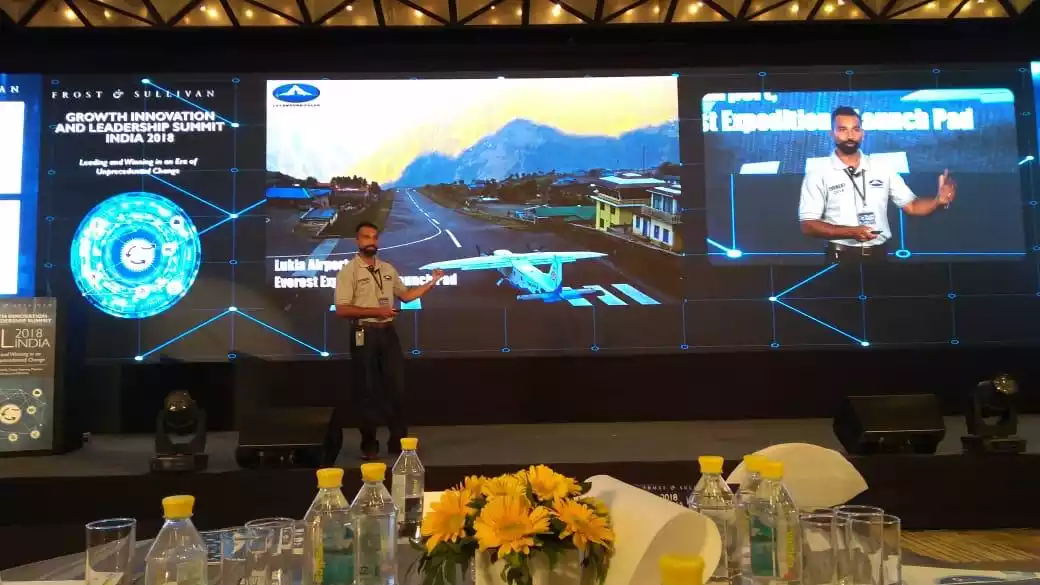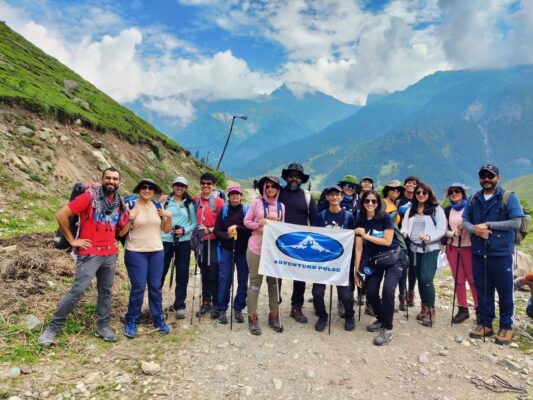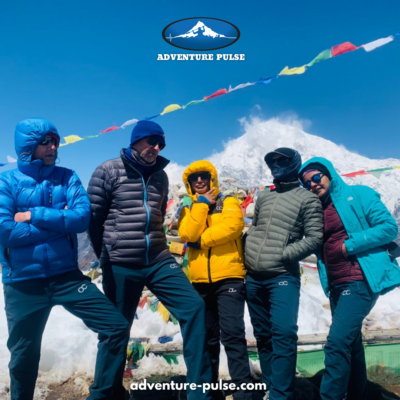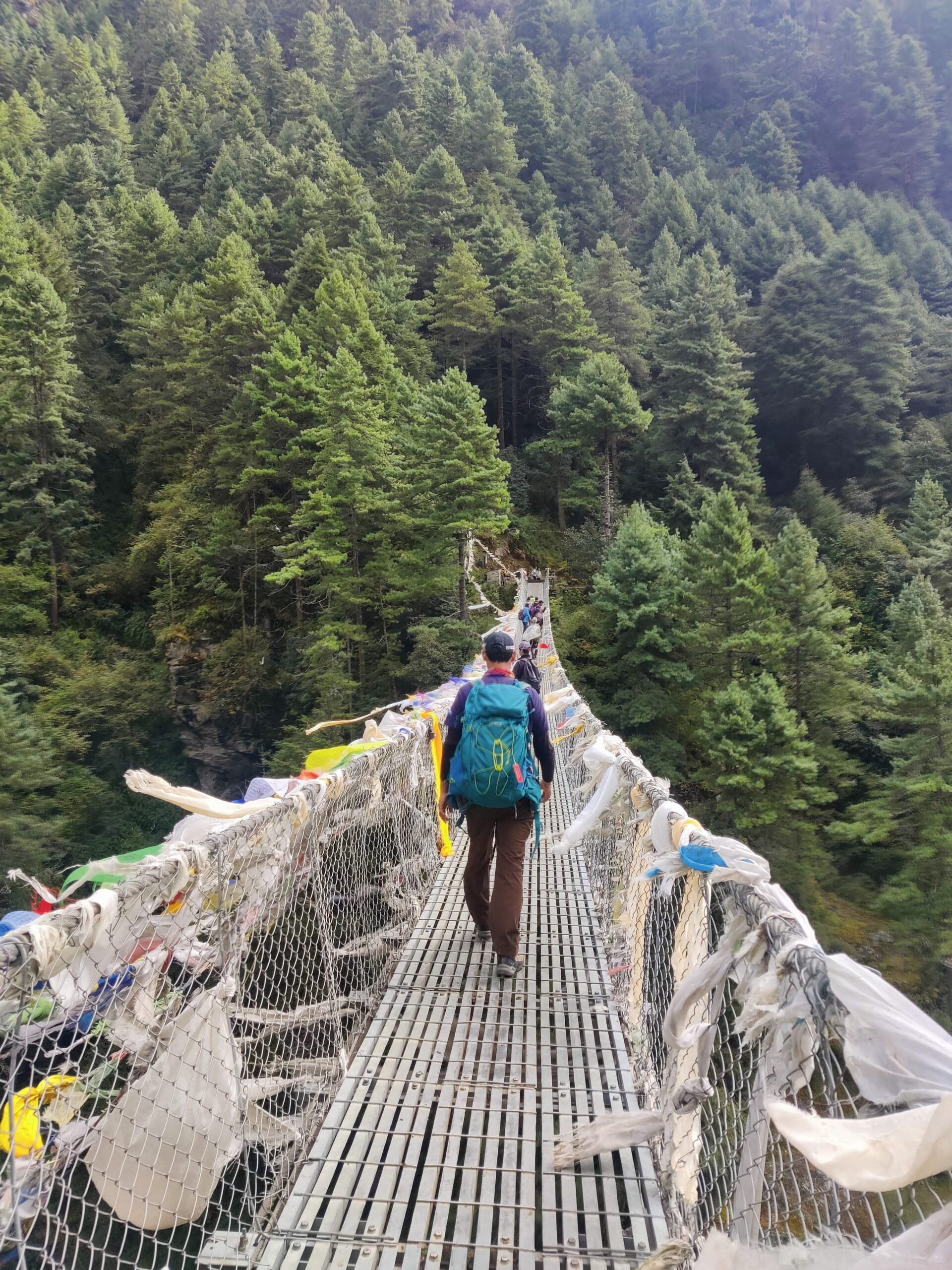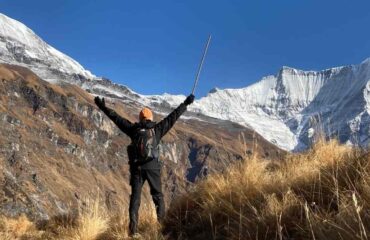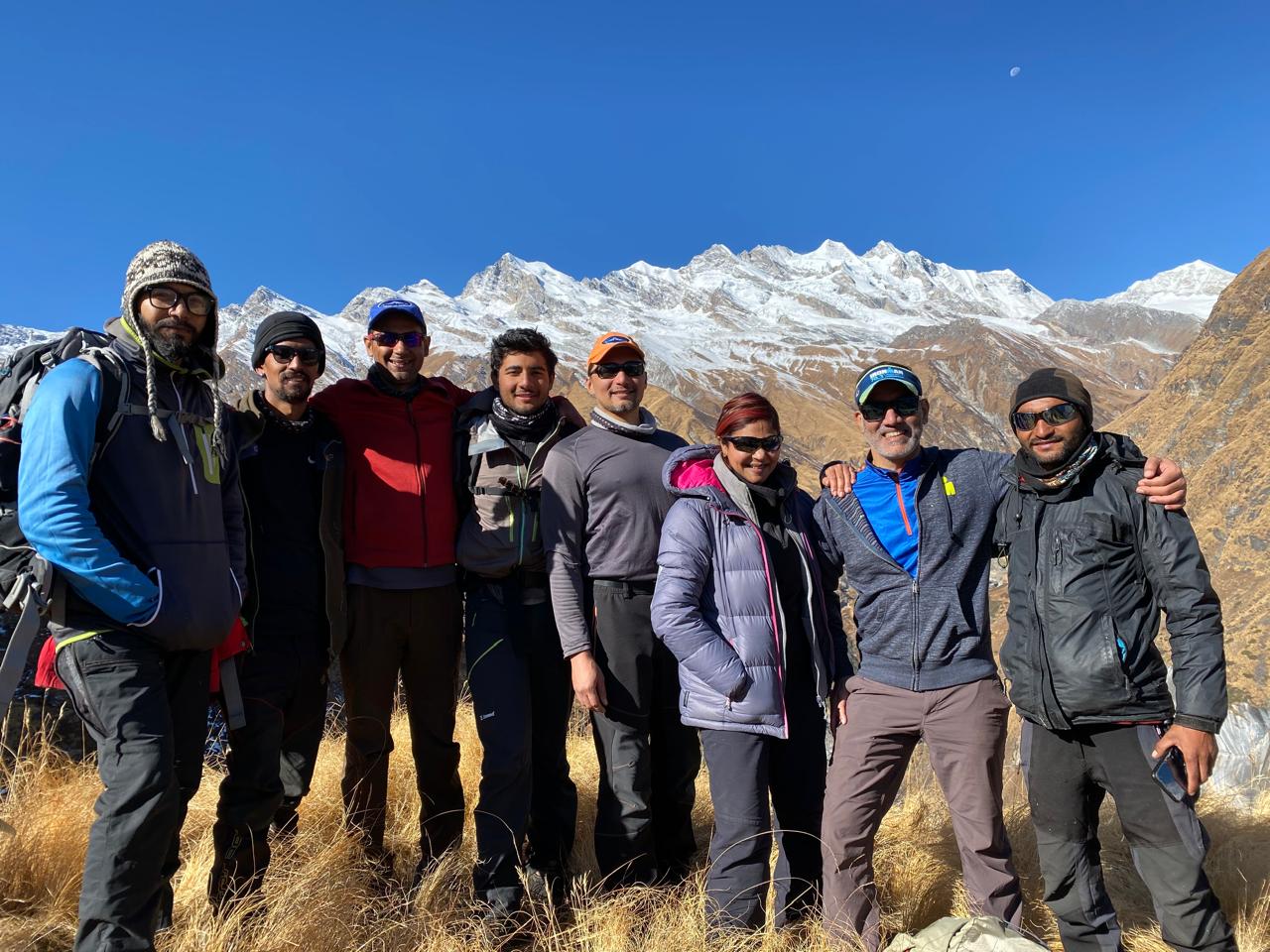
Introduction
Uttarakhand, located in northern India, boasts immense natural beauty. Famous for its vast Himalayan ranges, the region offers a variety of trekking experiences that cater to adventure lovers of all skill levels. From short, beginner-friendly treks to challenging high-altitude expeditions, Uttarakhand has something for everyone.
Among the most popular routes is the Pindari Glacier Trek, a stunning journey through the Kumaon region. Known for its breathtaking Himalayan views, diverse landscapes, and rich cultural encounters, this trek is a must-do in Uttarakhand for adventure enthusiasts.
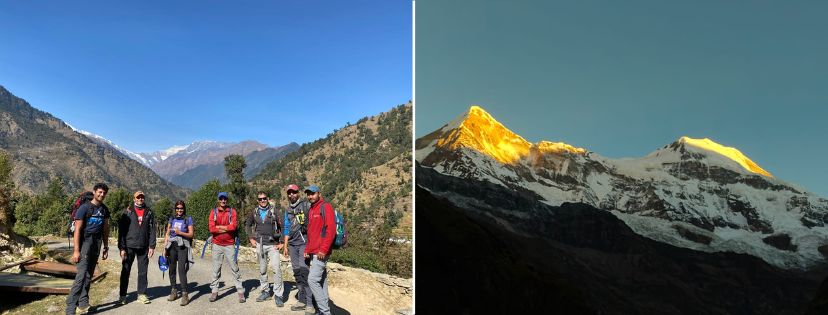
Overview
The Pindari Glacier is located within the Nanda Devi Sanctuary, at an altitude of 12,300 feet above sea level. Notably, this glacier feeds the Pindar River, which eventually meets the Alaknanda River at Karnaprayag.
Surrounded by the towering peaks of Nanda Kot (22,520 feet) and Nanda Devi (25,643 feet), the glacier forms a surreal landscape. To the right, you will find the Kafni Glacier, and to the left, the Sunderdhunga Glacier. In fact, all three glaciers share a common starting point in Bageshwar.
The Pindari Glacier Trek is generally considered easy to moderate, making it accessible for first-time trekkers and amateurs. However, you will need to be physically fit to ensure a comfortable journey and make the most of this adventure.
In this blog, we will guide you through everything you need to know about the Pindari Glacier Trek and what to expect on this incredible trek in Uttarakhand.
Where is the Pindari Glacier Located?
Located in the Bageshwar district, the Pindari Glacier forms part of the Nanda Devi Biosphere Reserve. The glacier sits amidst towering peaks such as Nanda Devi and Nanda Kot, adding to the region’s dramatic beauty. The Pindar River, which originates from the glacier, flows through the area and eventually joins the Alaknanda River at Karnaprayag.

Best Time to Trek to Pindari Glacier
The best time to embark on the Pindari Glacier Trek is from April to June and September to November. During these months, the weather remains mild, with clear skies and easy trekking paths.
In spring, the trail bursts into a riot of rhododendron blooms, while in autumn, the cool, crisp air and bright skies create perfect conditions for trekking and photography.
The monsoon season (July to August) should be avoided due to heavy rainfall, which makes the trails slippery and dangerous. In winter, the paths often become covered with snow, making the trek unsafe and difficult.
Local Culture & Hospitality in Kumaon, Uttarakhand
The Kumaoni people, who live in the villages along the Pindari Glacier Trek route, are renowned for their warm hospitality. In particular, villages such as Khati, Dhakuri, and others offer trekkers a unique glimpse into the traditional Himalayan lifestyle. These remote communities maintain a deep connection with nature and lead simple lives, often in harmony with the surrounding landscape.
As you trek through these villages, you will stay in traditional guesthouses run by local families. Made from locally sourced materials, these accommodations provide trekkers with an authentic experience. Moreover, the warmth of the hosts, who are eager to share stories about their culture and way of life, adds a personal touch to your journey.
In these villages, many people engage in agriculture, animal husbandry, and traditional crafts. This offers you the opportunity to learn about these activities and gain insight into the challenges faced by the local communities in such remote areas. Additionally, you might even help prepare a Kumaoni meal or listen to local folk music around the fire.
The Pindari Glacier Trek presents an incredible chance to immerse yourself in the culture of Uttarakhand’s mountain communities.
Terrain
As you ascend, the terrain gradually transforms, offering a variety of landscapes. From dense forests to vast meadows, and eventually to rugged mountain terrain, the trek offers an ever-changing panorama of the Himalayas.
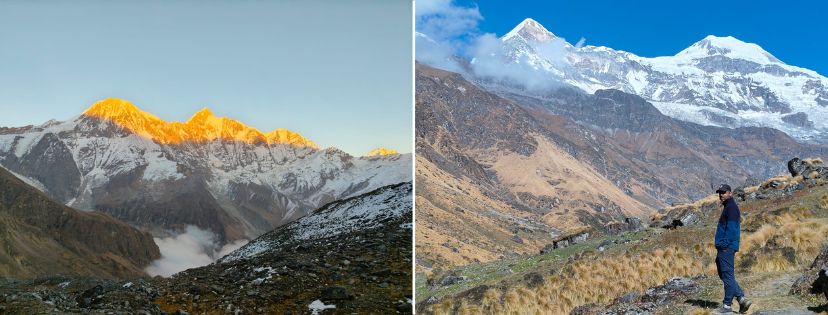
The towering peaks of Nanda Devi and Nanda Kot provide a dramatic backdrop. Their snow-covered summits stand in sharp contrast to the lush greenery of the lower altitudes. Along the way, you will cross crystal-clear rivers and streams, and witness waterfalls cascading down the mountainside.
You may also encounter local wildlife, such as the Himalayan tahr and mountain goats. Birdwatchers will enjoy spotting species like the Himalayan monal, India’s national bird.
Adventure Pulse Campsites
Upon arriving in Kathgodam, we will drive you to Bageshwar for an overnight stay in a guesthouse. The following day, the trek begins from Khati. Our comfortable campsites along the way are equipped with everything you need:
- Sleeping Area: Spacious sleeping tents designed for comfort.
- Dining Area: A tent with tables and stools for meals, lit by solar lights at night.
- Kitchen Area: Where our team will prepare hot, fresh meals daily.
- Toilet Facilities: Clean and hygienic toilets, placed away from the sleeping and dining areas for privacy.
How Will I Sleep During the Trek?
During the trek, you will stay in comfortable alpine dome-shaped tents. At Adventure Pulse, we provide a 3-man tent for two people. If you prefer a single tent, we can arrange that at an additional cost. Each tent comes with foam insulation, a sleeping mat, and a thick sleeping bag to ensure a restful night’s sleep.
What About the Toilets?
We provide clean toilet tents equipped with flushable loos. Once the porters reach the next campsite, they set up the toilets away from water sources to ensure hygiene. Each toilet is equipped with sanitizing sprays, toilet paper, and waste packets.
What Will I Be Carrying on the Trek?
Your personal gear will be carried by mules, so you only need to carry a small daypack with essentials like a light jacket, raincoat, water bottle, and packed lunch. For a detailed list of items to bring, refer to our recommended checklist.

Meals During the Trek
At Adventure Pulse, we prioritize nutrition so that you remain energized throughout the trek. Our varied menu includes rice, roti, sabzi, daal, khichdi, and more, with options for both breakfast and dinner. Additionally, we also provide packed lunches to fuel your journey.
Adventure Pulse Support Staff
Each group is accompanied by a lead guide and assistant guides, who, together, ensure safety and smooth navigation of the trail. Moreover, our guides are experienced and knowledgeable about the route. In addition, a cook and helpers will also assist with meal preparations and camp setup.
Trekking Route and Itinerary
The traditional route for the Pindari Glacier Trek begins in Bageshwar and leads through Khati, Dhakuri, Dwali, Phurkia, and finally to the Pindari Glacier. Here’s a breakdown of the trek:
- Day 1: Drive from Kathgodam to Bageshwar
- Day 2: Drive to Khati and trek to Dwali
- Day 3: Trek from Dwali to Phurkia
- Day 4: Trek from Phurkia to Pindari Zero Point and back to Phurkia
- Day 5: Trek from Phurkia to Dwali
- Day 6: Trek from Dwali to Khati and drive back to Bageshwar
- Day 7: Drive from Bageshwar to Kathgodam. The trek ends here.
Conclusion
The Pindari Glacier Trek is more than just a trek—it’s an adventure into the heart of the Indian Himalayas. This journey offers stunning alpine landscapes, thrilling river crossings, and encounters with local cultures and wildlife.

For trekkers seeking to experience the best of trekking in Uttarakhand, the Pindari Glacier Trek provides the perfect blend of physical challenge, cultural discovery, and natural beauty. Whether you are a beginner or an experienced trekker, this trail offers something unforgettable. Its pristine beauty and unmatched views have earned it a well-deserved spot on the bucket lists of many adventurers.
Follow us on Instagram: instagram.com/adventurepulse

